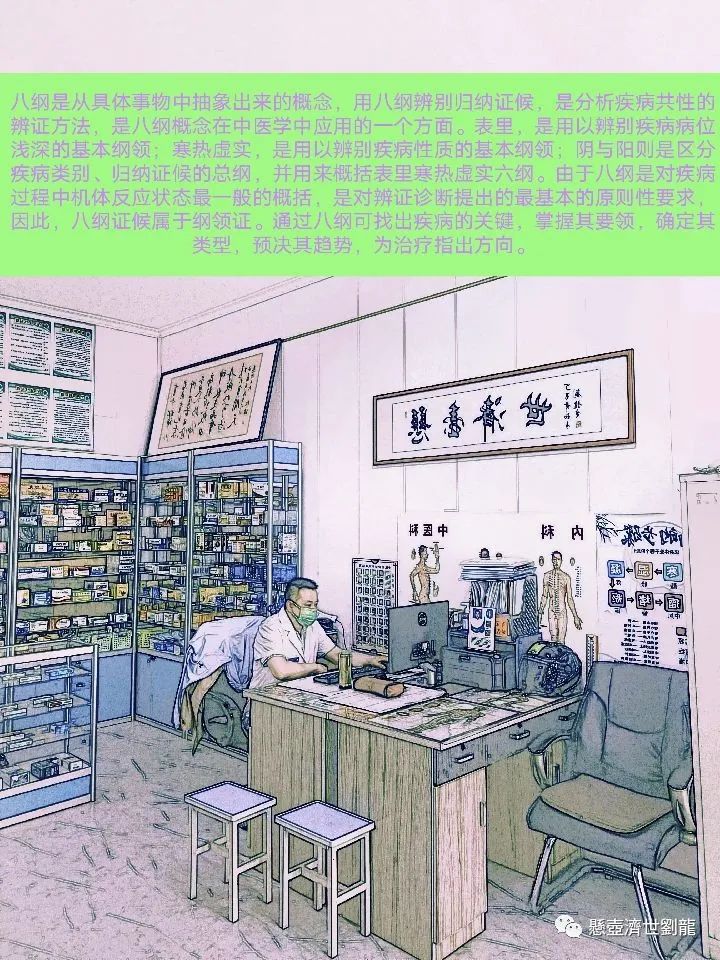
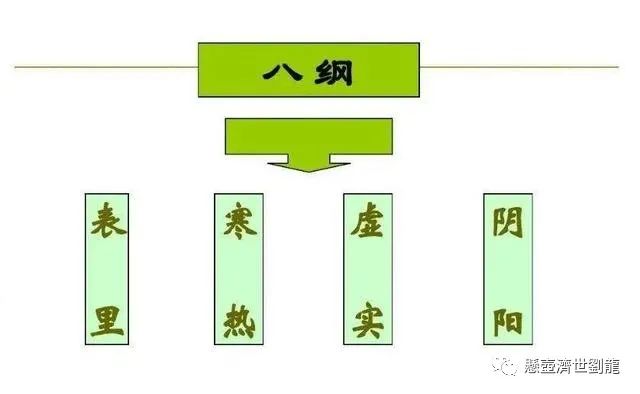
Deficiency (Xu) and Excess (Shi) syndromes can present with true and false symptoms. “Extreme deficiency has excess signs” and “extreme excess has deficiency signs” refer to the authenticity of the syndromes.
True deficiency and false excess indicate a condition that is fundamentally excess but presents certain deficiency-like symptoms.
Clinical manifestations may include a silent demeanor, fatigue, emaciation, and a deep, thin pulse. However, despite being silent, the patient may speak loudly at times; despite fatigue, they may feel comfortable when moving; emaciated limbs may accompany a hard, distended abdomen that resists pressure; and a deep, thin pulse may still be strong upon palpation. Syndrome analysis indicates that due to heat accumulation in the stomach and intestines, phlegm and food stagnation, damp-heat accumulation, and blood stasis, the pathogenic qi has accumulated significantly, leading to obstruction of the meridians and impaired flow of qi and blood, thus presenting symptoms similar to deficiency syndrome. However, the essence of the disease is excess, hence the patient may speak loudly at times, feel comfortable when moving, have emaciated limbs but a hard, distended abdomen that resists pressure, and a pulse that is deep and thin yet strong upon palpation. “Accumulation in the center causes pain upon pressure, with a red complexion and a strong pulse, indicating excess; if severe, the patient may be silent and unwilling to speak, limbs cold, or experience dizziness and diarrhea, indicating significant excess with deficiency signs.” True deficiency and false excess indicate a condition that is fundamentally deficiency but presents certain excess-like symptoms. Clinical manifestations may include abdominal distension, shortness of breath, or constipation, with a rapid pulse. However, the abdomen may be distended yet sometimes relieved, or upon palpation, there may be no masses and the patient may prefer pressure; despite shortness of breath, the patient may have weak breathing; despite constipation, the abdomen may not be very hard; and despite difficulty urinating, there may be no red tongue or thirst. Additionally, symptoms may include fatigue, a pale or sallow complexion, a weak pulse, and a pale, swollen tongue. Syndrome analysis indicates that the pathogenesis is often due to organ deficiency, insufficient qi and blood, and impaired transformation, leading to symptoms such as abdominal distension, shortness of breath, and constipation that resemble excess syndrome. However, the essence is deficiency, hence the abdominal distension may sometimes relieve, or there may be no masses upon palpation, indicating that it is not due to internal accumulation of excess pathogenic factors but rather due to spleen deficiency. Shortness of breath and weak breathing indicate that it is not due to obstruction of pathogenic qi but rather due to deficiency of lung and kidney qi. Constipation with a not very hard abdomen indicates that the yang qi has lost its ability to warm and move, leading to impaired bowel function; deficiency of yang qi may also lead to difficulty urinating. Symptoms of fatigue, a pale or sallow complexion, a weak pulse, and a pale, swollen tongue further indicate the essence of deficiency of righteous qi. “Pain in the chest that stops upon pressure, with a pale complexion and a weak pulse, indicates deficiency; if severe, there may be extreme distension and inability to eat, with discomfort and constipation, indicating extreme deficiency with excess signs.”
Distinguishing true and false deficiency and excess relies on the pulse and tongue. If it is truly excess, the pulse must be large, rapid, and strong upon pressure; if it is true heat, the tongue must be dry, yellow, and firm. How can there be no pulse upon strong pressure and still be called excess? How can a tongue that is completely swollen and tender still be called true heat? Thus, the key to distinguishing true and false deficiency and excess lies in the strength or weakness of the pulse, the vitality of the spirit, particularly the deep pulse being the true essence; next is the tongue quality being tender and swollen versus pale and old, and the voice and breath being loud and strong versus weak and timid. The patient’s constitution, the duration of the illness, and the treatment process are also important factors for analysis. It should be noted that in clinical practice, symptoms reflecting deficiency and excess are often mixed, with both deficiency of righteous qi and excess of pathogenic qi present. The relationship between the mixed nature of deficiency and excess and the true and false nature is often difficult to distinguish. During clinical diagnosis, it is essential to differentiate the severity of deficiency and excess and analyze their causal relationships. Syndrome transformation refers to the changes in the location, nature, or the state of pathogenic and righteous qi during the progression of the disease, transforming from one syndrome to an opposing one. Syndrome transformation indicates that both the essence and manifestation of the syndrome have changed, thus differing from the concepts of syndrome compatibility, mixing, and true and false. However, it should be recognized that before such qualitative changes in syndrome transformation, there is often a quantitative process, thus prior to syndrome transformation, there may be a relationship of syndrome compatibility and mixing. There are two possibilities for syndrome transformation: one is the disease progresses from superficial to deep, from mild to severe; the other is the disease progresses from severe to mild, from deep to superficial, indicating improvement. Exterior and interior transformation refers to the mutual transformation between exterior and interior conditions, where the disease may transform from exterior to interior, or the pathogenic factors may exit from the interior to the exterior. Generally, such changes in disease location, from exterior to interior, often indicate a worsening condition, while from interior to exterior often suggests an improvement. Understanding the changes in the exterior and interior of the disease is crucial for predicting the development and outcome of the disease, timely adjusting treatment methods, and effectively guiding the treatment direction.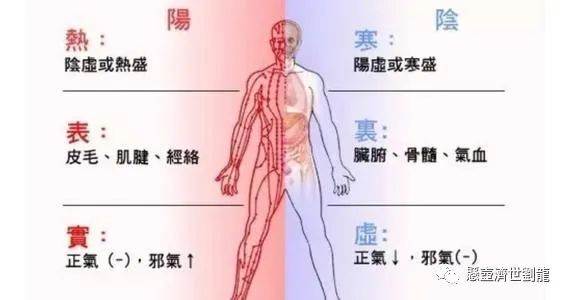
Transformation from exterior to interior indicates that the syndrome has transformed from an exterior syndrome to an interior syndrome, meaning the disease has progressed from superficial to deep. External pathogens such as the six excesses may invade the exterior, and if not resolved externally, they often penetrate inward, resulting in the disappearance of exterior symptoms and the emergence of interior symptoms. For example, initially presenting with chills and fever, a floating pulse, when the chills disappear and only fever remains, with a red tongue and yellow coating, and a rapid pulse, indicates that the exterior pathogen has entered the interior and transformed into an interior heat syndrome. Transformation from exterior to interior generally occurs in the early to mid-stages of externally contracted diseases, when the body fails to expel the pathogen outward, or due to excessive pathogenic qi, improper care, or misdiagnosis, leading to the pathogen not being expelled externally, thus worsening the condition. Transformation from interior to exterior indicates that the pathogenic factors from the interior have reached the exterior, suggesting that the disease is on the path to recovery. Some interior syndromes, when treated promptly and with proper care, may enhance the body’s resistance, expelling the pathogen outward, thus presenting symptoms or signs of the pathogen reaching the exterior. For instance, in children with measles, if the heat toxin is trapped internally, the rash may not appear, leading to fever, cough, and irritability; however, if the toxin reaches the exterior, the rash appears, and the fever and cough subside. In externally contracted warm diseases, symptoms such as fever and thirst may improve with sweating, indicating that the pathogenic qi has reached the exterior. Transformation from interior to exterior occurs when the pathogenic toxin from the interior has a pathway to the exterior, but this does not mean that the interior syndrome has transformed into an exterior syndrome. This is because the original interior symptoms do not disappear, and the characteristic symptoms of exterior syndromes such as chills and fever do not reappear. “A disease must enter from the exterior to be called an exterior syndrome; if it enters from the interior to the exterior, it is not an exterior syndrome.” Transformation of cold and heat refers to the opposite transformation of the cold and heat nature of the disease. Cold syndromes transforming into heat indicate vigorous yang qi, while heat syndromes transforming into cold indicate weakened yang qi. Cold syndromes transforming into heat refer to a condition that was originally cold but later presents with heat symptoms, while the cold symptoms disappear. This transformation is often seen when an external cold pathogen is not expelled in time, and the body’s yang qi is relatively strong, leading to internal heat accumulation to a certain degree, causing the cold pathogen to transform into heat. Alternatively, cold-damp pathogens may obstruct the flow, and if the body’s yang qi does not weaken, the cold may transform into heat. Overuse of warming and drying substances may also lead to the transformation of cold syndromes into heat syndromes. For example, cold-damp bi syndrome initially presents with cold pain, heaviness, and numbness in the joints, but over time, or with excessive use of warming and drying medications, it may transform into red, swollen, and burning pain in the affected area. Asthma caused by cold may initially present with thin, white phlegm, but over time, the tongue may become red with a yellow coating, and the phlegm may become yellow and thick. Cold sores that are cold and swollen may initially present with no change in skin color, but later transform into red, swollen, and painful lesions with pus, indicating a transformation from cold to heat.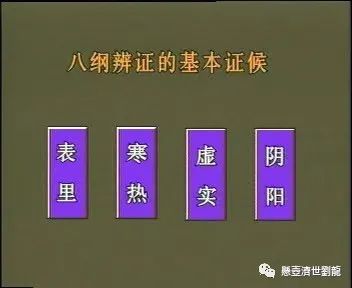
Heat syndromes transforming into cold refers to a condition that was originally heat but later presents with cold symptoms, while the heat symptoms disappear. This is often seen in severe cases of pathogenic heat or due to misdiagnosis or improper treatment, leading to excessive pathogenic qi that injures righteous qi, resulting in the body being unable to withstand the pathogen, leading to a state of deficiency-cold, or even symptoms of loss of yang. For example, in the early stages of epidemic dysentery, there may be high fever and thirst, with a red tongue and rapid pulse, but if there is a sudden onset of cold limbs, pale complexion, and a weak pulse, or if the disease progresses over time, the patient may exhibit aversion to cold, cold limbs, and a pale tongue, indicating a transformation from heat to cold. The mutual transformation of cold and heat is determined by the comparative strength of the pathogenic and righteous forces, with the key being the state of the body’s yang qi. The transformation of cold into heat indicates that the body’s righteous qi is still strong, and the yang qi is relatively vigorous, allowing the pathogenic qi to transform into heat, suggesting that the body’s righteous qi can still resist the pathogenic qi. The transformation of heat into cold indicates that although the pathogenic qi has weakened, the righteous qi is insufficient, and the yang qi has been depleted, indicating that the righteous qi cannot withstand the pathogenic qi, leading to a worsening condition. Transformation of deficiency and excess refers to the opposite transformation of the nature of deficiency and excess in the disease, indicating a fundamental change in the relationship between the pathogenic and righteous qi. The transformation from excess to deficiency is a general rule of disease progression; the transformation from deficiency to excess often indicates a mixed nature of the syndrome.
Transformation from excess to deficiency indicates that the condition initially presented as excess but later manifests as deficiency, suggesting disease progression.
The trend of the struggle between pathogenic and righteous qi may either indicate that the righteous qi overcomes the pathogenic qi and leads to recovery, or that the righteous qi cannot withstand the pathogenic qi, leading to prolonged illness. Thus, over time, or due to misdiagnosis or improper treatment, the righteous qi may be injured and insufficient to resist the pathogenic qi, leading to the transformation from excess to deficiency. For example, a patient may initially present with cough, phlegm, and a coarse breath, but over time may develop shortness of breath, low voice, pale complexion, a pale tongue, and a weak pulse; or initially present with high fever, thirst, and profuse sweating, but later show fatigue, drowsiness, reduced appetite, dry throat, a tender red tongue without coating, and a rapid pulse, indicating that although the pathogenic qi has been expelled, the righteous qi has been injured, leading to the transformation from excess to deficiency. Deficiency syndromes indicate insufficient righteous qi, weakened organ function, and a lack of nourishment, leading to stagnation of qi and blood, with pathological products accumulating, and the excess pathogenic qi becoming the main aspect of the syndrome, thus presenting symptoms primarily of excess. Transformation from deficiency to excess actually indicates that the condition has progressed from deficiency to excess, thus not representing an improvement in the disease state, but rather indicating disease progression. For example, if the heart yang qi is deficient for a long time, it may lead to insufficient warmth and movement, resulting in blood stasis, and on the basis of original symptoms of heart qi deficiency, the patient may later present with chest pain, dark lips and tongue, and a choppy pulse, indicating heart blood stasis syndrome, where the excess of blood stasis has surpassed the deficiency of heart qi, thus representing a transformation from deficiency to excess. Similarly, if the spleen and kidney yang are deficient, they may fail to warm and transform fluids, leading to excessive water retention and resulting in edema; after blood loss, the patient may present with a pale complexion, a pale tongue, and a thin pulse, indicating blood deficiency, and due to blood deficiency failing to moisten the intestines, leading to constipation, abdominal distension, and foul breath. These are generally due to deficiency leading to excess, and do not represent a true transformation from deficiency to excess. In summary, the so-called transformation from deficiency to excess does not indicate the recovery of righteous qi, nor does it indicate the pathogenic qi has become excessive, but rather indicates a transformation from a deficiency syndrome to a syndrome primarily characterized by excess. The Eight Principles are abstract concepts derived from specific phenomena, and using the Eight Principles to analyze and summarize syndromes is a method for analyzing the commonalities of diseases, representing an application of the Eight Principles in Traditional Chinese Medicine. Exterior and interior are fundamental guidelines for distinguishing the depth of disease location; cold and heat, deficiency and excess are fundamental guidelines for distinguishing the nature of diseases; yin and yang serve as the overarching principles for categorizing diseases and summarizing syndromes, encompassing the six principles of exterior and interior, cold and heat, deficiency and excess. Since the Eight Principles provide the most general summary of the body’s response states during the disease process, they represent the most basic principled requirements for differential diagnosis, thus syndromes categorized by the Eight Principles belong to the category of principled syndromes. Through the Eight Principles, one can identify the key aspects of the disease, grasp its essentials, determine its type, and predict its trends, providing direction for treatment. The Eight Principles of differential diagnosis form the foundation of diagnosis, serving to simplify complex cases and highlight key points, applicable to the differential diagnosis of various diseases across different clinical specialties, while other classification methods are specific deepening of the Eight Principles. The Eight Principles of differential diagnosis provide a principled differentiation of the essence of diseases from eight aspects. However, this does not mean that the Eight Principles merely classify various syndromes into eight distinct categories, as the Eight Principles are not isolated from one another but are interconnected and variable, allowing for compatibility, mixing, and transformation, such as exterior and interior syndromes, mixed deficiency and excess, mixed cold and heat, exterior syndromes transforming into interior syndromes, interior pathogens exiting to the exterior, cold syndromes transforming into heat, heat syndromes transforming into cold, excess syndromes transforming into deficiency, and deficiency syndromes transforming into excess, and may also present true and false syndromes, such as true heat and false cold, true cold and false heat, true deficiency and false excess, true excess and false deficiency, etc. This greatly increases the complexity of the Eight Principles of differential diagnosis, allowing for the combination of various more specific syndromes, such as exterior and interior excess-cold syndromes, exterior cold and interior heat syndromes, thus expanding the feasibility and practicality of differential diagnosis of diseases. Although clinical syndromes may be complex and variable, they can all be summarized using the Eight Principles.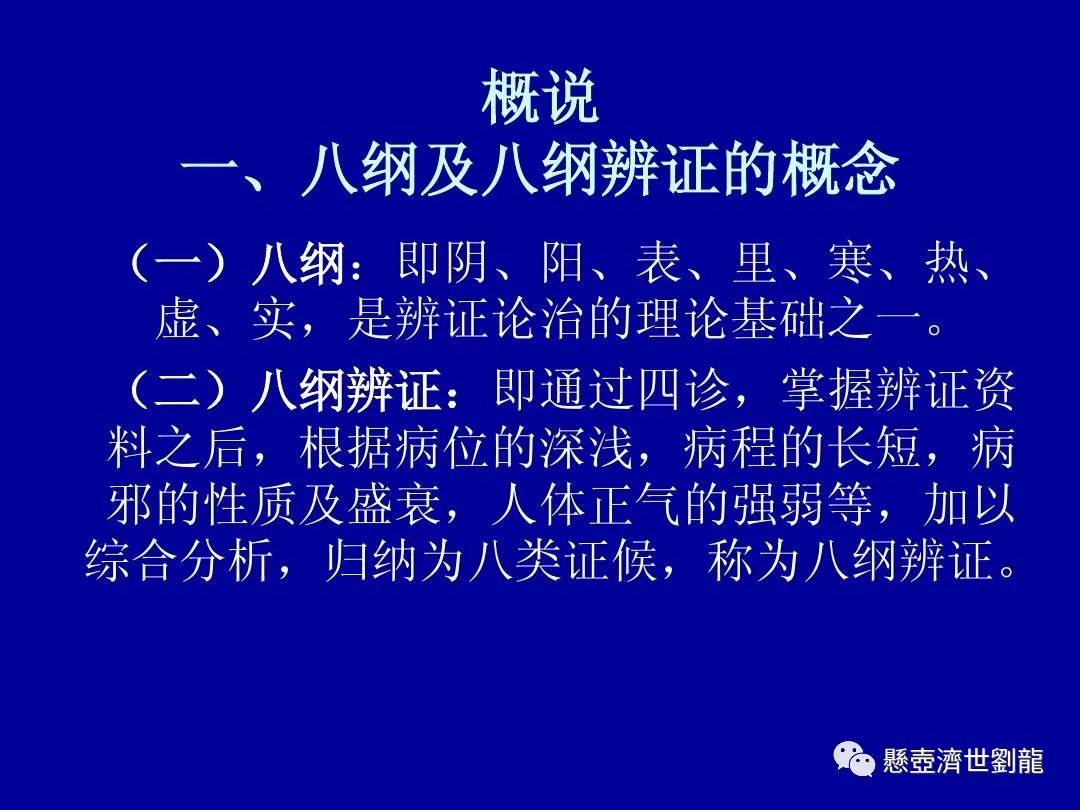
Of course, the understanding of the essence of diseases through the Eight Principles is still not deep or specific enough. For instance, the concept of interior syndromes is very broad, and the Eight Principles do not clarify which organs are affected; cold and heat cannot encompass the pathological nature of dampness and dryness; deficiency and excess each have various specific pathological changes. Therefore, the Eight Principles are ultimately just a “framework”; the Eight Principles of differential diagnosis are relatively general and abstract, and in clinical practice, one should not be satisfied with merely distinguishing the Eight Principles but should combine other classification methods for a more in-depth analysis and judgment of the disease’s syndromes. We should not merely understand the Eight Principles of differential diagnosis as a simple categorization of relatively general syndromes, but recognize that the Eight Principles, through their interrelationships, prominently reflect the dialectical thinking of Traditional Chinese Medicine. Many dialectical viewpoints in TCM are embodied through the relationships of the Eight Principles. Understanding the dialectical relationships among the Eight Principles allows us to recognize that various phenomena in diseases are interrelated and in a state of change, that contradictory phenomena not only exist in opposition but are also defined in relation to each other, with intermediate and transitional stages, and that they can transform into one another. Thus, the establishment of the Eight Principles concept marks the refinement of dialectical thinking in TCM, reflecting many fundamental aspects of dialectical thought, capturing the main contradictions that carry universality in diseases, which is of significant guiding importance for the study of other differential diagnosis methods and for correctly understanding the disease process in clinical practice.


Consultation WeChat ID

